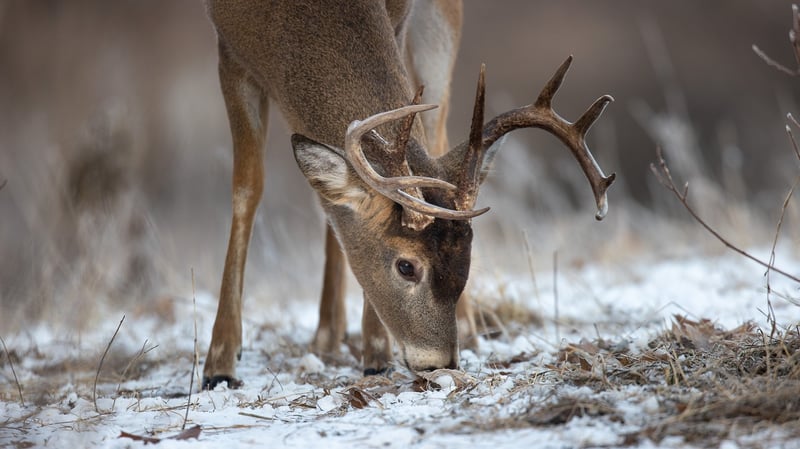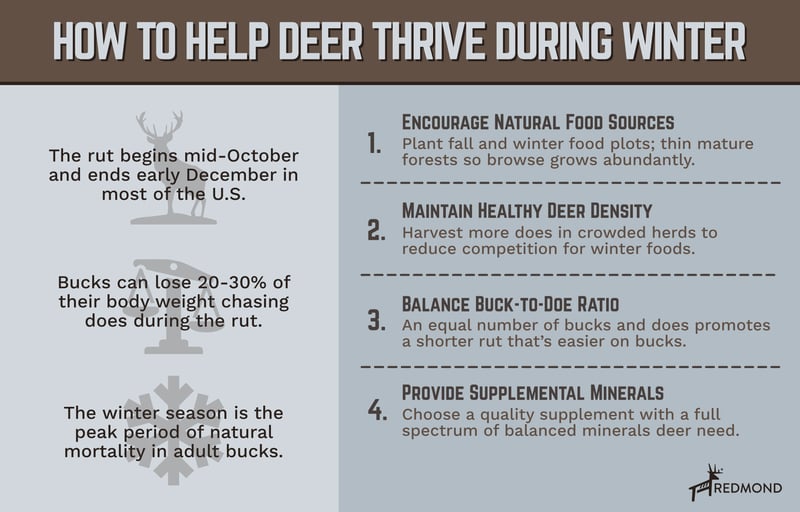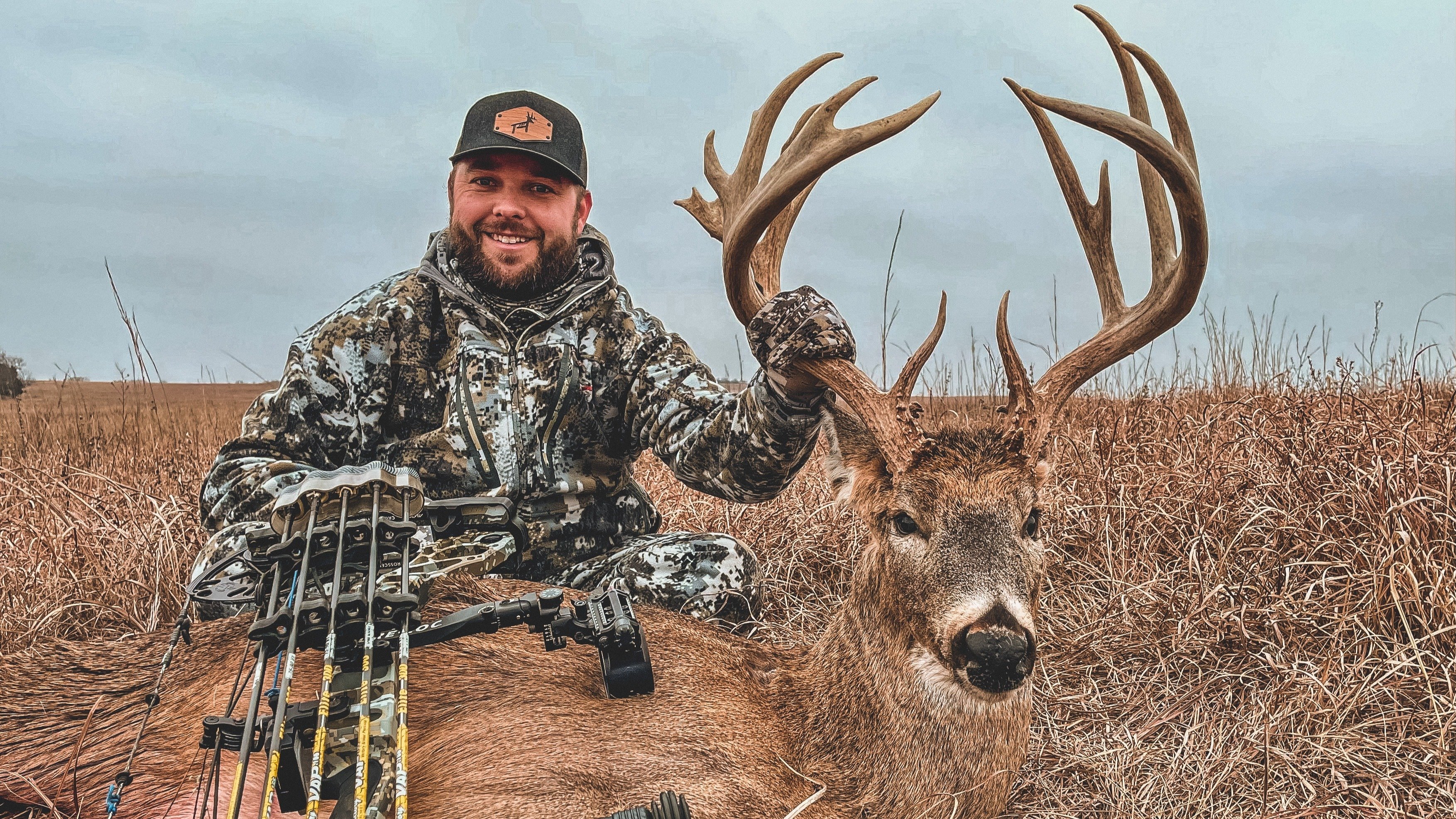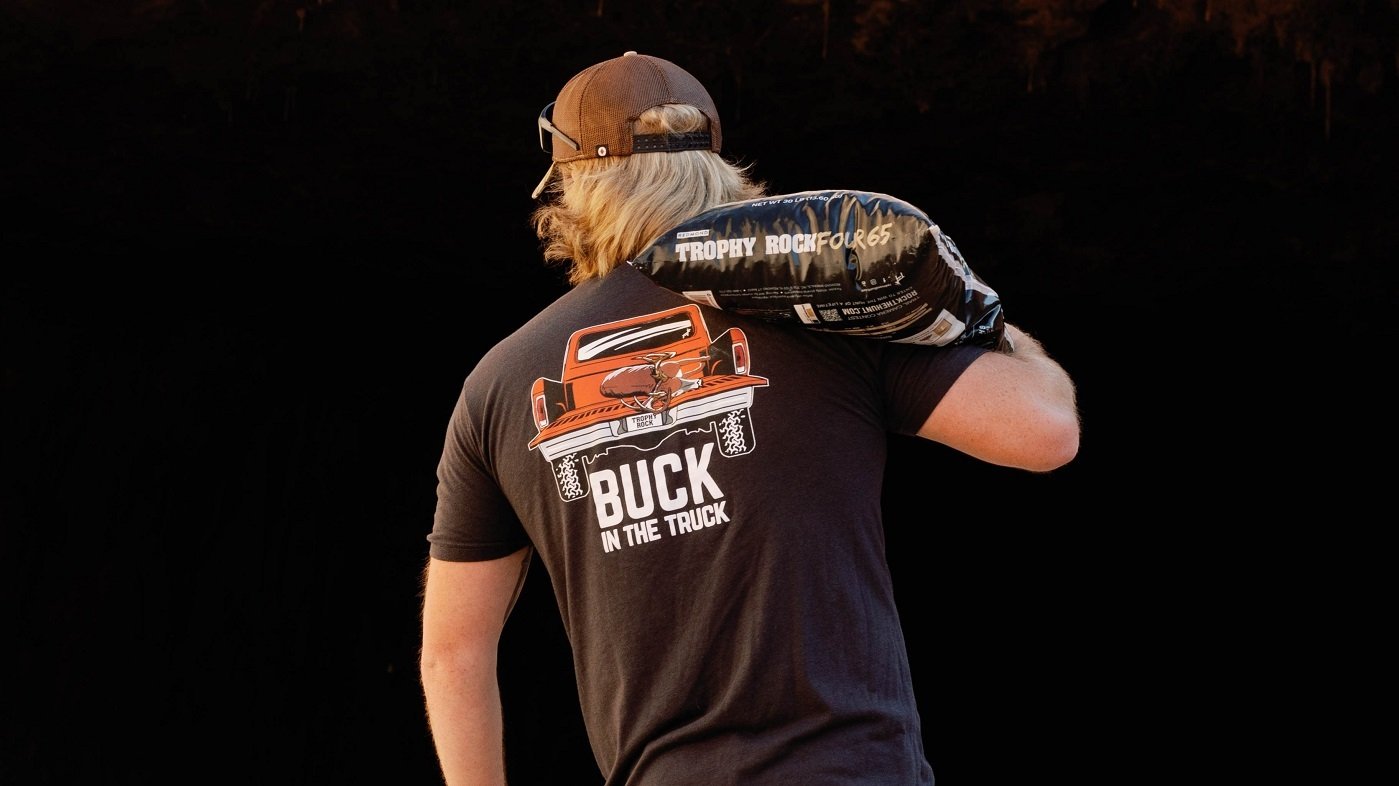Redmond Hunt Blog
How Hunters Can Help Deer Survive Post-Rut & Winter Stress
Redmond Hunt November 28, 2023
Post-rut winter stress in deer strains health and survival rates. Learn four ways to help them recover, including feeding deer in winter and managing herds.
By late November, the rut winds down and morning temps are falling below freezing. Most hunters have hauled in a buck and headed home, and the woods are again growing quiet. It’s the season when post-rut and winter stress in deer set in, and the peak period of natural mortality for adult bucks.
Winter is a critical time when whitetails need ample resources to battle the elements and overcome losses from the rut—and the time of year when the fewest are available. So, how can hunters and conservationists help deer in the winter? We play an important role in not only helping deer survive, but also thrive post-rut.
This article looks at ways to speed recovery by improving your herd’s habitat, supplementing deer food, and managing population. First, though, let’s look at how the rutting season and winter affect deer population and activity, particularly in bucks.
Effects of the Rut on Deer
During the rut, bucks’ typical foraging behaviors and movements change, and they instead expend huge amounts of energy on rutting activities. Their attention switches from finding food to a steely focus on scraping, rubbing, fighting, seeking, and chasing does. This flurry of activity and disinterest in food can span weeks to months and thoroughly exhaust males.
When the rut finally wraps up around the first of December, bucks are drained of energy and reserves. In fact, bucks can lose 20-30 percent of their body weight during the rut. To put that in perspective, let’s view it in human terms. If you’re an average 6-foot, 180-pound male and you drop 25% of your body weight, that equates to 45 pounds. You’ve plummeted to a lean 135 pounds—and that’s in just a short month.
Such drastic weight loss leaves bucks heading into winter in depleted and dangerous conditions. Some that chase does too hard may succumb to starvation if plentiful food sources aren’t available. If deer do survive winter on lean resources, they’ll spend spring and summer refueling, but may not have time to add enough weight or reach optimal antler growth before the fall rut begins again.
 A whitetail buck in the snow forages for food after the rut.
A whitetail buck in the snow forages for food after the rut.
What Do Deer Do After the Rut?
We know the stressed state bucks are in after the rut. Now how do their activities and habits change to compensate? Post-rut is all about resting and refueling. That means about the time you’re finishing your Thanksgiving leftovers and waking from a turkey coma, deer are just starting to hammer food sources and settle in for some much-needed sleep. Bucks will usually find a place with ample forage and go into seclusion in some out-of-the-way, hard-to-reach area of cover.
Hunting Tip: December can be a great time for hunting. Bucks are back in a routine, hitting food sources, and once again become easier to pattern. And because the weather has cooled, they daylight more as they get up to move and eat. Check out this blog for more info and tips on how to hunt post-rut.
4 Ways to Help Deer in the Winter
A conservationist’s aim post-rut should be to help deer recover quickly and keep them headed in a positive direction through the winter. This ensures you have more young males entering spring in good shape and more does fostering healthier fawns. Here are four important herd management practices the National Deer Association recommends.

1. Promote Quality Food Sources
Want to encourage more natural nutritional resources in your herd’s habitat? Try these two ideas:
- Encourage forest cover. Woody winter browse—like twigs, stems, and dormant buds—is important nutrition for deer. Encourage more natural winter deer food by thinning mature forests and putting sunlight back on the ground so browse can grow abundantly.
- Plant fall food plots. The best fall food plots for deer include annual clovers and perennial white and chicory clovers. They’re nutritious, preferred by deer, and last into the following summer.
2. Maintain a Balanced Deer Population Density
A crowded herd can create food scarcity and increase mortality rates in deer post-rut. You can remedy it and prevent starvation by balancing your herd density. If your herd’s food sources and population are balanced, there will be adequate nutrition for all—which means healthier deer and higher survival rates. Balance deer density by harvesting enough does to reduce competition for winter foods.
3. Maintain a Balanced Buck to Doe Ratio
Creating a balanced buck-to-doe ratio in your herd will result in a more intense, shorter rut that’s easier on bucks and helps them get back to feeding, and recovering, more quickly.
A good buck-to-doe ratio can be achieved by:
- Harvesting an appropriate number of does. Generally, that's achieved by taking an equal number of does and bucks each year, creating a more even balance between the sexes.
- Increasing your buck population by protecting yearlings and age classes up to three years old.
4. Provide Deer Supplemental Minerals
While spring is when mineral use really amps up, providing deer minerals in winter is also important for health. Most does head into winter with a baby or two on the way, which requires additional minerals to support pregnancy and, eventually, lactation. Bucks head into winter run down and depleted of energy, protein, and mineral reserves. If a buck enters early spring still low in minerals, it can delay antler growth.
If you live in a state where feeding and baiting are legal, put out a supplement at your mineral site starting in late summer or fall. Deer may only occasionally lick on it through the rut but will noticeably amp up usage in December. Supplementing minerals is an important way to help them recover post-rut and fill in nutritional gaps. Just make sure you choose a high-quality supplement with a full spectrum of balanced minerals they need.
Conclusion
While December might be the most wonderful time of year for humans, it’s the most difficult for deer. Post-rut stress can have dire consequences on a deer herd, but you can play a significant role in helping them recover more quickly. Just remember to encourage natural food sources on your property, provide quality mineral supplements, and manage your deer density and buck-to-doe ratio. Doing so will help you see healthier does, higher fawn survival rates, deer entering fall with bigger antlers, and more young males joining the ranks of mature bucks.
Need balanced, high-quality mineral supplements to help deer recover after the rut? Redmond Trophy Rock products have 60+ minerals that nourish deer and improve health. Click below to learn more and purchase your preferred product today.
© Redmond Hunt 2023. All rights reserved.



.jpg)
